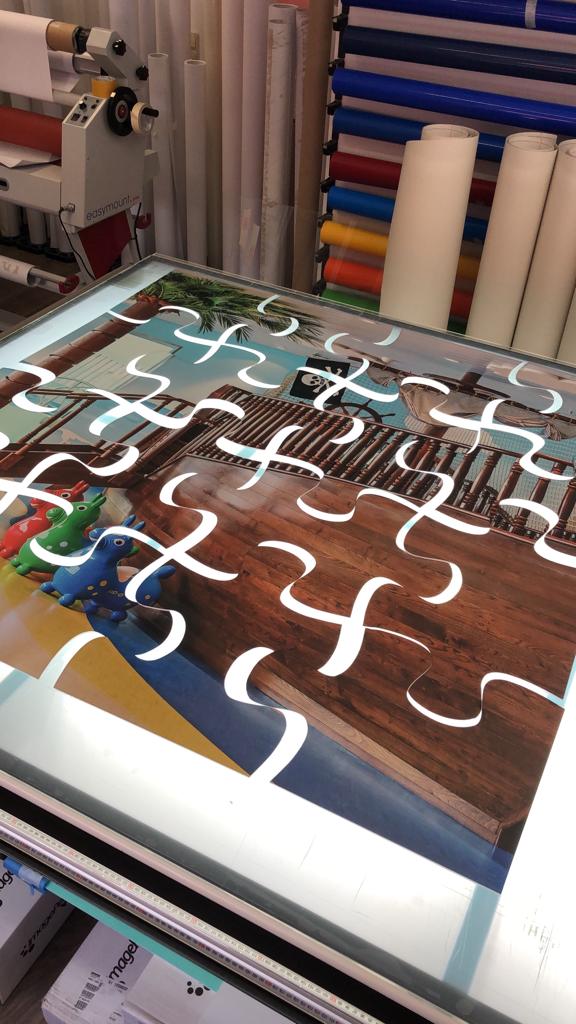Installing event graphics in challenging venues requires careful planning, strategic techniques, and a keen eye for detail. Whether you’re dealing with unusual layouts, limited space, or difficult surface conditions, the success of your event’s visual presentation depends on how well you manage these obstacles. In this blog post, we’ll explore best practices for installing event graphics in challenging venues to ensure a smooth and effective installation process.
1. Thorough Venue Assessment
Before starting any installation, it’s crucial to perform a comprehensive assessment of the venue:
- Site Inspection: Conduct a detailed site inspection to understand the venue’s layout, surface types, and any potential obstacles. Take note of architectural features, lighting conditions, and traffic flow to plan your installation accordingly.
- Surface Evaluation: Assess the surfaces where graphics will be installed, including walls, floors, and ceilings. Determine whether they are smooth, textured, or uneven, as this will affect the type of adhesive and installation method needed.
2. Detailed Planning and Preparation
Effective planning is essential for a successful installation:
- Design Adaptation: Customize your graphic designs to fit the unique characteristics of the venue. Ensure that dimensions and placements are adjusted based on the venue’s layout and constraints.
- Pre-Installation Mockups: Create mockups or prototypes of your graphics to test how they will look and fit in the actual space. This helps identify any adjustments needed before the final installation.
3. Selecting the Right Materials and Adhesives
Choosing the appropriate materials and adhesives is crucial for ensuring durability and ease of installation:
- Material Selection: Opt for materials that are suitable for the venue’s surfaces. For example, use adhesive vinyl for smooth surfaces and wall coverings for textured walls. Consider factors such as durability, removability, and environmental conditions.
- Adhesive Choices: Select adhesives that are compatible with the surfaces and materials. For challenging surfaces or high-traffic areas, use high-quality adhesives that offer strong bonding and can withstand wear and tear.
4. Precision and Care During Installation
Attention to detail during installation can make a significant difference in the outcome:
- Alignment and Placement: Ensure precise alignment and placement of graphics. Use measuring tools and alignment guides to achieve accurate positioning and avoid misalignment.
- Surface Preparation: Clean and prepare surfaces before applying graphics. Remove dust, grease, and other contaminants to ensure that the adhesive adheres properly and the graphics remain smooth.
5. Handling Difficult Conditions
Certain venues may present specific challenges that require special techniques:
- Uneven Surfaces: For uneven or textured surfaces, consider using graphic films that conform to the surface contours or opt for mounting techniques that accommodate irregularities.
- High or Hard-to-Reach Areas: Use appropriate equipment, such as ladders or lifts, to safely reach high or difficult areas. Ensure that all safety protocols are followed to prevent accidents and ensure a secure installation.
6. Quality Control and Troubleshooting
After installation, perform a thorough quality check and address any issues:
- Inspection: Inspect the installed graphics for any defects, bubbles, or misalignments. Address any issues immediately to ensure that the final presentation meets your standards.
- Maintenance: Provide instructions for maintaining the graphics, especially if they are subject to high traffic or environmental conditions. Regular maintenance can help preserve the appearance and longevity of the graphics.
7. Post-Installation Support
Offer support and assistance to ensure ongoing satisfaction:
- Onsite Support: If needed, provide onsite support during the event to address any issues that may arise with the graphics. Having a team available to handle unexpected problems can prevent disruptions and maintain a professional appearance.
- Feedback Collection: After the event, collect feedback on the installation process and the performance of the graphics. Use this information to improve future installations and address any concerns.
Conclusion
Installing event graphics in challenging venues requires meticulous planning, precise execution, and the right materials. By following these best practices, you can overcome obstacles, ensure a smooth installation process, and achieve a visually impressive outcome for your event.
EventGraphics specializes in handling complex installation scenarios with expertise and efficiency. Our team is equipped to manage installations in a variety of challenging environments, ensuring that your event graphics are perfectly executed and visually stunning.
EventGraphics – The Event Graphic Specialists is your trusted partner for all your event graphic needs. Contact us today to learn how we can assist you with expert installation and ensure your graphics make a lasting impact at your next event. Let us help you achieve a flawless installation and elevate your event experience.

